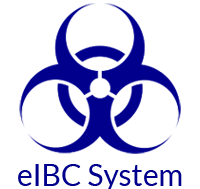Institutional Biosafety Committee (IBC)
OHSU Members should visit the Institutional Biosafety Committee (IBC) page on O2.
Recombinant or synthetic nucleic acids (r/sNA) and infectious agents are frequently used in research and have regulatory and safety aspects to their use. The Institutional Biosafety Committee (IBC) oversees the regulatory oversight of r/sNA research, biological toxins and the use of non-recombinant infectious agents.

- Research involving recombinant or synthetic nucleic acids as defined by the NIH Guidelines for Research Involving Recombinant or Synthetic Nucleic Acid Molecules.
- Infectious Agents: Risk group 2 agents and higher as defined by the CDC/NIH publication "Biosafety in Microbiological and Biomedical Laboratories".
- Biological Toxins: Toxins lethal for vertebrates at an LD50 of less than 100 nanograms per kilogram body weight and any toxins classified as Select Agents by the National Select Agent Registry.
To start the IBC review process, please create a safety submission in the eIBC.
Frequently asked questions (FAQs)
Recombinant nucleic acid research covered by the NIH Guidelines includes (but is not limited to) use of:
- virally based vectors
- in vivo work with any vector or recombinantly modified cells
- non-standard host-vector systems (see Appendix C of the NIH Guidelines),
- experiments involving culture volumes that are >10 liters
- vectors containing genes from Risk Group 3 or 4 organisms or genes for toxins lethal in vertebrates with an LD50<100ng/kg
Research with synthetic nucleic acid molecules, or their DNA or RNA derivatives, is covered by the NIH Guidelines if the nucleic acid molecule is being used in cells, organisms, or viruses and if it:
- has the potential to replicate in cells (e.g. a chemically synthesized virus or sequence contains an origin of replication)
- possess biological properties that enable introduction of stable genetic modifications into the genome (e.g., cis elements involved in integration, gene editing technologies such as CRISPR and TALEN used in vivo)
- encodes a toxin lethal for vertebrates with an LD50 of <100 ng/kg
- or use of synthetic nucleic acid molecules >100 nucleotides in human subjects
The following types of research with recombinant nucleic acids would typically be exempt:
- use of standard laboratory strains of bacteria or yeast, such as K-12 strains of E. coli, S. cerevisiae, S. uvarum, or any asporogenic B. subtillis or B. licheniformis
- transfection of tissue culture cells with non-viral vectors (e.g. plasmids)
- the purchase, maintenance, and breeding of transgenic rodents, with few exceptions as outlined in the Transgenic Animal Review Policy
The following types of research with synthetic nucleic acid molecules would typically be exempt:
- nucleoside analogs (e.g. BrdU) in vitro or in vivo
- siRNAs, microRNAs, or morpholinos in vitro or in vivo
- in vitro work with RNA based gene editing technology
- the chemical synthesis of nucleic acid molecules (including PCR)
If the research project involves one of the above examples but may also meet one of the criteria for non-exempt synthetic nucleic acid research in the top four bullets, contact the IBC for a determination.
To ensure you are using your Biological Safety Cabinet correctly, please adhere to the following:
- Turn the cabinet on 5-10 minutes before starting work in order to purge the air and remove any particulates.
- Wear a closed-front lab coat (or surgical gown) and gloves while working at the cabinet.
- Place all materials needed for manipulations in the cabinet before the work is initiated to minimize in-and-out motions.
- Do not use cabinets for storage, and minimize the amount of long-term materials left in the cabinet.
- Do not cover the air grills with any items.
- Work at least four inches into the cabinet.
- Keep the entry door to the lab closed and traffic to a minimum when the cabinet is in use.
- Develop procedures for the collection and decontamination of waste materials.
- Decontaminate with an appropriate disinfectant at the beginning and end of each work operation.
(Periodic use of 10% household bleach in water is acceptable, but chlorine is corrosive (70% ethanol wipe-down after every bleach use is required).) - Only use UV-light as a secondary method to sterilize the cabinet in between uses.
- Certify cabinets for use when first installed, any time the unit is moved or repaired, and on an annual basis.
(If large equipment is permanently used in the cabinet (ex: robotic pipette systems) then the cabinet must be certified with the equipment in place.) - Display your certification sticker indicating the last date of testing on the front face of the cabinet
Please see the Vector Table.